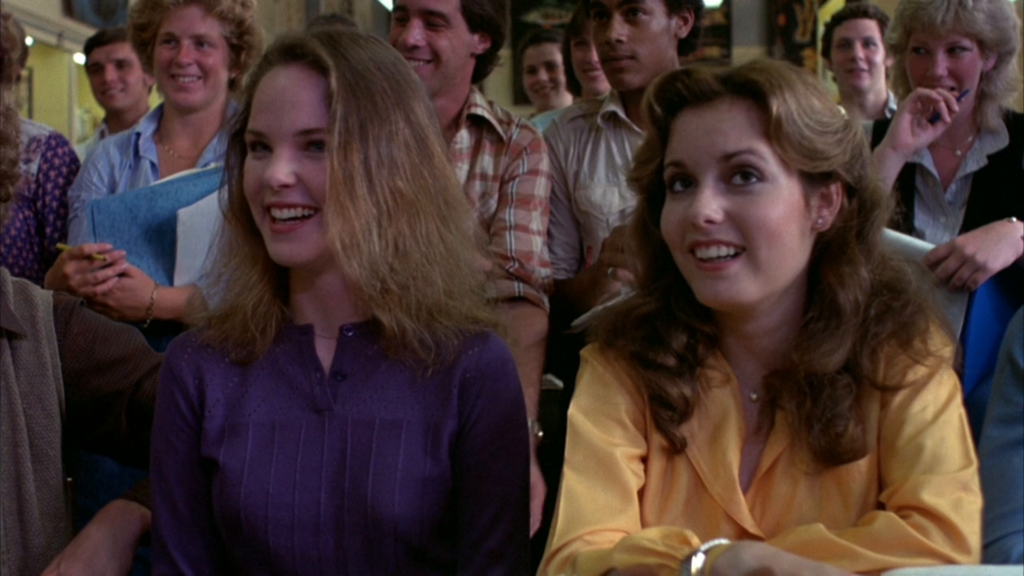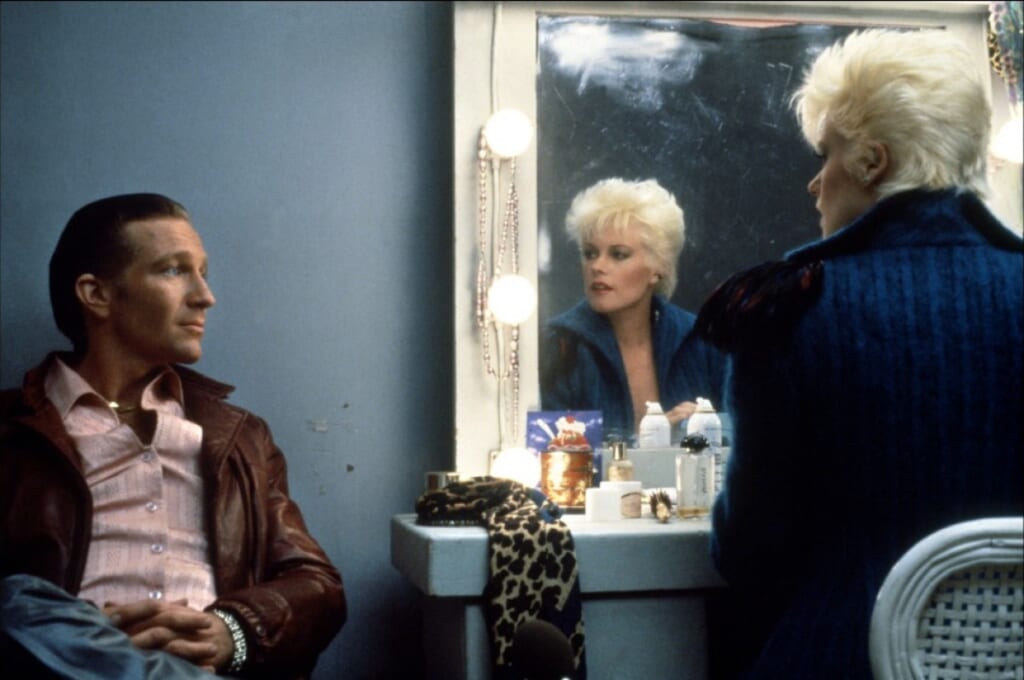These 4 American-Made Films Captured the Essence of the Giallo

With Dario Argento’s Dark Glasses making its way into theaters and arriving on Shudder, now feels like the perfect time to discuss the giallo and its influence on American cinema. But first, let’s take a moment to speak to the terminology, the origins of the genre, and offer a bit of context for anyone not overly familiar with this filmmaking style.
Giallo is the Italian word for ‘yellow’. The terminology originated with tawdry paperbacks featuring cover art with yellow as the predominant color. The tomes were cheaply manufactured and featured sexy, violent storylines catering to readers fond of escapism literature.
That terminology eventually came to describe not just literature but also a genre of film that melds violence, some form of detective work (often featuring an amateur trying to clear his or her name), surreal visuals, a dreamlike score, and plenty of sexuality. The killer in a giallo picture often wears black gloves. Also, the audience is typically offered a front-row seat to the antagonist’s violent proclivities from their point of view. The identity of the killer is almost always kept from the audience until the denouement. But the culprit is typically revealed to be a character to whom the audience has been previously introduced. The motivation of the madman or madwoman is frequently tied to sexual trauma or dysfunction, often dating back to an inciting event from early childhood.
The giallo became a major filmmaking trend in Italian cinema, beginning with Mario Bava’s seminal effort, The Girl Who Knew Too Much. Though that initial offering was lighter on sex and violence, Bava established the rough template with that effort. He further refined that formula the following year via the iconic Blood and Black Lace. Years later, the giallo would serve as a major source of inspiration for the slasher genre.
Though an undisputed export of Italy, the giallo has absolutely influenced American filmmakers. And we’ve even seen a few stateside releases that followed the template rather faithfully. With that in mind, I am pleased to bring you four American films that capture the essence of the giallo.
Dressed to Kill
Despite the fact that this film was made for American audiences by an American director, Dressed to Kill is a giallo. It’s not just giallo-esque. Nearly every aspect of the picture is inspired by Italy’s violent and highly sexualized murder mysteries. Like the cinematic efforts by which it was inspired, Dressed to Kill features a hazy and dreamlike score, a killer in black gloves, the use of misdirection and red herrings, and copious amounts of bare skin. This 1980 effort exists at the intersection of arthouse and grindhouse, making it something of a cinematic sweet spot for this critic.
My fondness for the film aside, it’s important to note that some of the picture’s themes haven’t aged well. Specifically, the storyline serves up a problematic narrative revolving around outdated ideas regarding trans people. My belief is that director Brian De Palma came from a place of ignorance and not spite. But it’s still important to note that some viewers may find this picture hard to watch.

Alice, Sweet Alice
The late Alfred Sole was a talented visionary. It’s a shame he didn’t direct more, seeing as Alice, Sweet Alice manages to serve up an intense atmosphere and delivers thoughtful commentary on the dark side of religion and religious fanaticism. The film is very giallo-esque, featuring the use of red herrings, revealing a core cast member to be the perpetrator, and delivering a surreal murder mystery narrative with an amateur detective on the case. Though the great Alfred Sole previously revealed he was not directly influenced by the giallo, he gave life to a film that bears many of the hallmarks of the genre. For anyone that hasn’t had the chance to experience Alice, Sweet Alice, it’s grimy, bizarre, unpredictable, and even rather progressive. The picture dares to feature an openly gay character at a time when that was almost never done.

Happy Birthday to Me
While Happy Birthday to Me was not particularly well-received by mainstream critics upon release, it is far from the disposable effort its reputation may lead you to believe. The film was helmed by British director J. Lee Thompson, who previously terrified audiences with Cape Fear (1962). With Happy Birthday to Me, Thompson proves, once again that he knows how to shock and frighten in equal measure. Though the narrative is a bit jumbled (likely the result of too many cooks in the screenwriting kitchen) Thompson still serves up a surreal offering with a few unexpected surprises.
While it hurt the film’s reception with mainstream critics, the lack of narrative cohesion actually increases the picture’s giallo cred. So many gialli were nearly incomprehensible with style being favored over substance and that’s certainly the case here.
In addition to a twisty storyline that doesn’t always make a lot of sense, Happy Birthday to Me also features a black-gloved killer that masquerades as a different character; provides perspective shots from the killer’s point of view; and delivers a wild twist ending that works far better if you don’t think too much about it. In short, Happy Birthday to Me is a giallo. Full stop.

Body Double
I’d be hard-pressed to pick a favorite Brian De Palma film. But Body Double would probably claim that distinction if I were forced to choose. While the director doesn’t rely on giallo tropes quite as liberally as he did with Dressed to Kill, he still took plenty of cues from the European murder mysteries of years past. A few noteworthy giallo influences in Dressed to Kill include a killer disguising their identity using prosthetics, a twisty and sometimes incoherent narrative that sees an amateur detective fighting to clear his name, and plenty of stylized violence. Oh, and lots of sex. Dressed to Kill is one of De Palma’s most engrossing efforts and it certainly serves up serious giallo vibes.

If you’re keen to chat more about gialli and their influence on American cinema, you can find me on Twitter @FunWithHorror!
